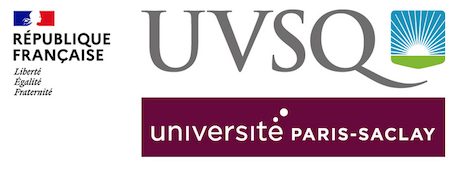You are here : ENGLISHAbout UVSQNews
- Partager cette page :
- PDF version
Diluted Ferromagnetic Semiconductors based on III-VI, IV-VI, and III-V compounds
This seminar presents the study of Diluted Ferromagnetic Semiconductors based on different compounds
on the June 5, 2009
Friday 5th June 2009 at 11:00 am
Groupe d’Etudes de la Matière Condensée (GEMaC)
Université de Versailles St Quentin en Yvelines – CNRS
45, Av. des Etats-Unis - 78035 Versailles Cedex
Université de Versailles St Quentin en Yvelines – CNRS
45, Av. des Etats-Unis - 78035 Versailles Cedex
Phase and chemical composition, magnetic susceptibility, transport properties, SIMS, magnetic force microscopy and neutron difractometry (ND) of single crystals GeSnMnTe and (In,Mn)Se in the wide range of temperatures and magnetic fields were investigated. In GeSnMnTe the existence of ferromagnetic (FM) ordering with Curie temperature TC~50 K, driven by indirect exchange interaction between Mn ions via degenerated hole gas was established. It was stated that FM regions of crystal at T<50 K are in the spin glass state. In (In,Mn)Se crystal the hysteresis loops of magnetic moment M(H) in wide temperature range 2.4 – 450 K were observed. They confirm FM ordering due to the existence of FM clusters in which the superexchange between Mn ions via anions (Se) and indirect interaction via 2D electron gas is supposed. The Curie temperature evaluated from M(T) dependence was equal to 800 K. The dramatic transformation of (In,Mn)Se electron spin resonance (ESR) spectra at temperature T<70 K was revealed. The low-field line is obliged to internal magnetic field induced by unusual ferromagnetism of second MnSe phase at T<70 K. The existence of electrical activity of Mn impurity situated at different positions in InSe lattice by transport measurements was proofed. The doubling of magnetic sublattice period for MnSe antiferromagnetic (AFM) second phase inclusions at T<70 K by neutron diffraction was revealed. The creation of self-assembled superlattice FM In1-XMnXSe/AFM MnSe was confirmed by SIMS studies.
Additional information
Seminary presented by Professor Georgii V. Lashkarov from the Institute for Problems of Material Science, Kiev, Ukraine


